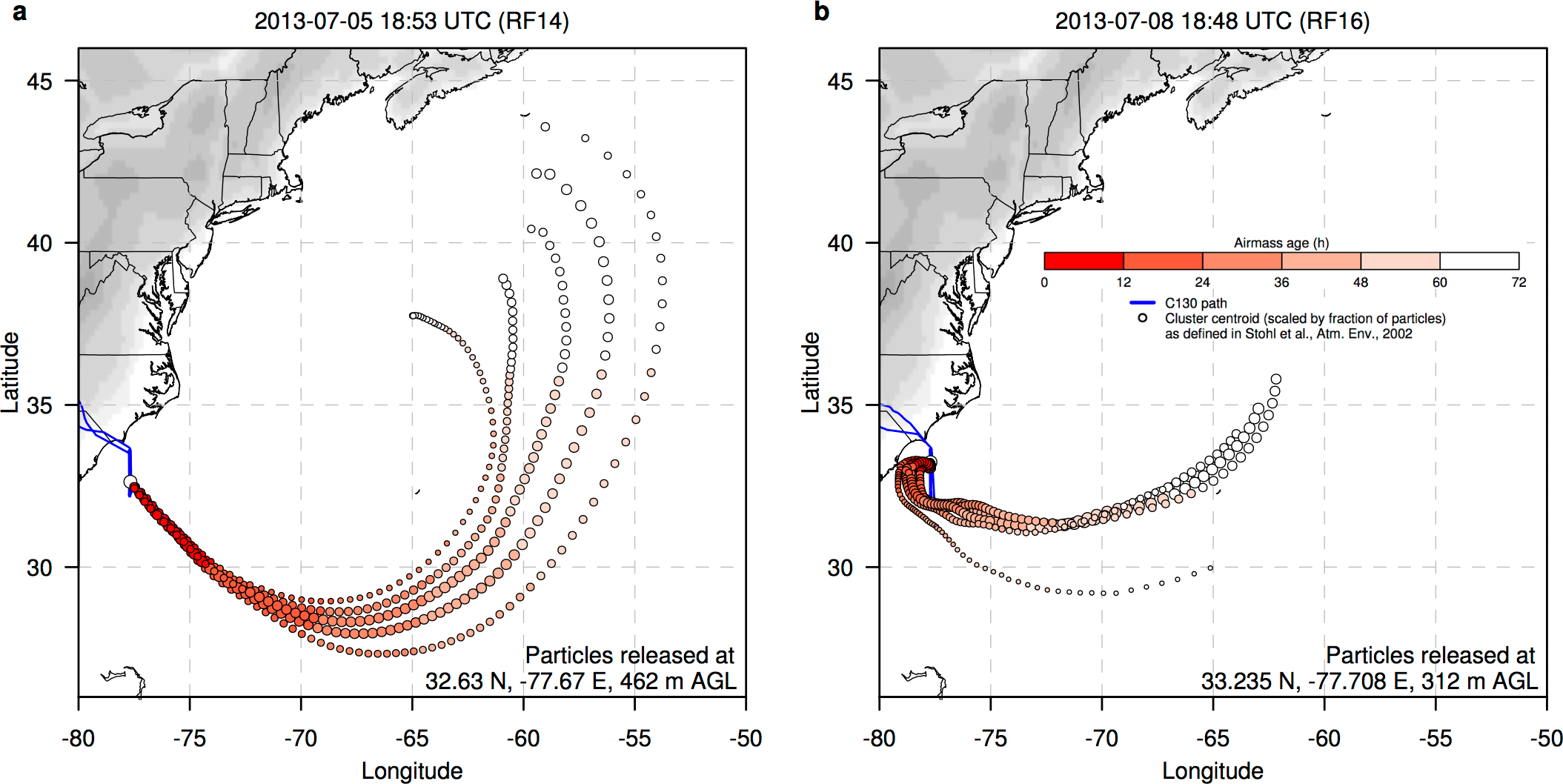Novel source of nitrogen oxides discovered in the marine boundary layer
04.05.2016
Novel source of nitrogen oxides discovered in the marine boundary layer

Nitrogen oxides (NOx) play a central role in the formation of secondary aerosol, ozone and the hydroxy radical (OH), responsible for the self-cleansing capability of the atmosphere. For a long time now, researchers were on the lookout for another source of NOx additionally to direct emissions by traffic, industry and residential combustion.
Within the Nitrogen, Oxidants, Mercury and Aerosol Distributions, Sources and Sinks (NOMADSS) campaign in summer 2013 measurements have been taken over the Atlantic Ocean using the C-130 research aircraft of the National Center for Atmospheric Research (NCAR). Nitric acid (HNO3), a typical end product of the oxidation of NOx in the atmosphere, was one of the compounds investigated.
Dr. Christoph Knote of the Meteorological Institute contributed to a study evaluating these measurements that has now been published in Nature (Ye et al., 2016). In this work it is shown, for the first time, that photolysis of particulate nitrate can be responsible for the observed concentrations of nitrogen oxides in the marine boundary layer. As 70% of the Earth is covered with ocean, this 're-noxification' process represents a highly relevant, novel source of nitrogen oxides.
Ye, C., Zhou, X., Pu, D., Stutz, J., Festa, J., Spolaor, M., Tsai, C., Cantrell, C., Mauldin, R. L., Campos, T., Weinheimer, A., Hornbrook, R. S., Apel, E. C., Guenther, A., Kaser, L., Yuan, B., Karl, T., Haggerty, J., Hall, S., Ullmann, K., Smith, J. N., Ortega, J., and Knote, C. (2016). “Rapid cycling of reactive nitrogen in the marine boundary layer”. In: Nature 532.7600, pp. 489–491. doi: 10.1038/nature17195.

